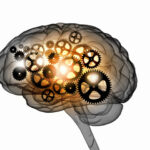What is Attention-Deficit Hyperactivity Disorder (ADHD)?
Attention-Deficit Hyperactivity Disorder (ADHD) is an often-misunderstood condition, which is not only over diagnosed, but under diagnosed as well. While Attention deficit hyperactivity disorder (ADHD) is one of the most common mental health disorders of childhood, ADHD is not just a childhood disorder. The symptoms affect children, teens, and adults. Recent national surveys have documented an increase in the prevalence of Attention-Deficit Hyperactivity Disorder (ADHD) during the past decade. In fact, according to the Centers for Disease Control and Prevention (more simply known as the CDC), it is estimated that in the United States alone approximately 8 percent of children ages 3-17 years have ever been diagnosed with ADHD. This includes 11 percent of boys’ ages 3-17 years old and nearly 6 percent of girls’ ages 3-17 years old. This stunning fact means that around 5 million children from the ages of 3-17 years old have been diagnosed with Attention-Deficit Hyperactivity Disorder (ADHD) in the United States. In childhood, ADHD is more common in boys than girls by a ratio of 3 to 1, but by adulthood this ratio seems to even out. The symptoms of Attention-Deficit Hyperactivity Disorder (ADHD) include inattention, impulsivity and hyperactivity. Nearly everyone shows some of these behaviors at times, but ADHD lasts more than 6 months and in affected individuals these symptoms frequently lead to problems in several areas of a person’s life. These include academic, school, occupation, family, home, relationships and social settings. They begin in childhood and often persist into adulthood. The specific causes and risk factors for Attention-Deficit Hyperactivity Disorder (ADHD) are unknown, but genetic factors do play a large role. The appropriate diagnosis of Attention-Deficit Hyperactivity Disorder (ADHD) should involve several steps, including a medical exam; a checklist for rating Attention-Deficit Hyperactivity Disorder (ADHD) symptoms based on reports from parents, teachers, and sometimes the child; and an evaluation for coexisting conditions.
Why is Attention-Deficit Hyperactivity Disorder (ADHD) Over Diagnosed?
There are a number of conditions or problems that can mimic the distractibility, impulsivity and hyperactivity usually associated with ADHD. For instance, while a lack of focus (distractibility) is considered by many to be suggestive of ADHD there are actually two things that must be present for one to focus: Attention and Concentration. Attention problems may certainly be the result of ADHD, but certain kinds of Seizures can affect this as well. The second is concentration. There are a number of things that if present can cause problems with concentration and lead someone to be diagnosed with ADHD, when the real problem is something else. Depression, Anxiety, OCD, Tourette’s Disorder, Poor Nutrition, High Levels of Lead in the Blood and Poor Sleep can all lead to a decrease in concentration, which would then cause focusing problems. Impulsivity and hyperactivity can also occur with Anxiety, Tourette’s Disorder, Poor Sleep, Poor Nutrition (such as Foods with Sugar, Food Additives, and Dyes) and Bipolar Disorder. Additionally, the level of acceptable hyperactivity varies depending on ones age. So while one could expect a 5 year old to be running around a fountain at a public park, we wouldn’t expect it from a 15 year old.
Why is Attention-Deficit Hyperactivity Disorder (ADHD) Under Diagnosed?
Some critics of ADHD allege that children with problematic behavior are often diagnosed with ADHD when the behavior may result from other causes. These critics are correct and this underscores the need to have individuals evaluated correctly. Other critics state that some children diagnosed with ADHD, or labeled ADHD by parents or teachers, are normal but do not behave in the way that responsible adults want them to behave. This too is important, given that parents often see kids as a reflection of themselves or are afraid of how others may view them. As a result, they can be overly critical of normal childhood behavior due to fear of embarrassment or being wrongly judged.
Does Attention-Deficit Hyperactivity Disorder (ADHD) Occur in Adults ?
It is now known that in 60% of children ADHD symptoms can continue into adulthood. That amounts to 4% of the US adult population, or roughly 8 – 10 million adults. However, few adults are identified or treated for adult ADHD. Additionally, while ADHD affects males at a higher rate than females in childhood, this ratio seems to even out by adulthood. Adults with ADHD may have trouble in a number of areas that can cause associated behavioral, emotional, social, occupational and academic problems. These include chronic lateness, forgetfulness, problems concentrating and following directions. They also include problems organizing tasks and completing work within time limits. Furthermore, they can result in impulsiveness, low frustration tolerance, and chronic feelings of boredom, difficulty controlling anger and more. These behaviors can be mild to severe and can vary with the situation or be present all of the time. For instance, some adults with ADHD can be withdrawn and antisocial, or they can be overly social and unable to be alone. Some are able to concentrate if they are interested in or excited about what they are doing (such as something that gives their brain a “Wow”). Others may have difficulty focusing under any circumstances. Some will look for stimulation, but others avoid it. Adults with ADHD are more likely to have had a history of poor educational performance, been underachievers in school, had more frequent school disciplinary actions, repeated a grade or dropped out of school. As a result of all these challenges, they can end up with anxiety, mood swings, depression, substance abuse or addiction, low self-esteem and relationship problems. Adults with ADHD are more likely to smoke cigarettes, have driving violations such as: be cited for speeding; have their licenses suspended; be involved in more crashes; rate themselves and others as using poorer driving habits. They may have a lower socioeconomic status, and use illegal substances more frequently.
How Does Attention-Deficit Hyperactivity Disorder (ADHD) Affect Teenagers?
Incredibly, ADHD teens can have about four times the amount of traffic citations, four times as many car wrecks and are seven times more likely to be involved in a second car accident as non-ADHD teens. In school they can have problems with authority figures, exhibit verbal hostility, defiance and non-compliance. As teenagers 21% repeatedly skip school, 30% fail subjects and repeat a year of school, 35% get suspended and 35% drop out of school. It is important to diagnose and treat ADHD in teens with some form of child psychiatry.
Is Attention-Deficit Hyperactivity Disorder (ADHD) Genetic?
There is strong evidence that genetics plays a role in the risk of getting ADHD. In fact, a study conducted in 2009 concluded that genetics account for about 75 percent of the risk. Additionally, it runs in families, to the point that 40% of ADHD children have at least one parent with ADHD. Specific studies have found that kids with ADHD were more likely to have small parts of their DNA that were duplicates or missing. These deletion or duplication of genetic material is called copy number variants or CNVs. However, this research did not conclude that ADHD is entirely genetically based. In fact, human development includes both genetic origins of behavior and the direct influence that environmental forces have on the expression of those genes (nature vs. nurture). Simply put, how our genes express themselves is greatly impacted by our environment. This is important because increased environmental stress can, in effect, turn ON genes that were previously in the OFF position. Presently, once these genes are turned ON and ADHD is expressed (present in the individual) the genes cannot be turned OFF. However, while there is no cure for it, treatments can in effect “dim the lights” to the point that someone can appear as if they don’t have ADHD, provided they continue with treatment.
How Does Attention-Deficit Hyperactivity Disorder (ADHD) Lead to Academic or School Impairment?
It is estimated that in a classroom of 30 students there are about 1 to 3 children with ADHD. 65% of ADHD children have problems with authority figures, exhibit verbal hostility, defiance, temper tantrums and non-compliance. About 25% of ADHD students have additional learning problems that can be serious. These include problems with listening skills, oral expression, reading comprehension and mathematics. 50% of ADHD students have problems with listening comprehension. 33% of ADHD students have language deficits, poor organizational skills, poor fine motor skills and poor memory. ADHD children are three times more likely to have problems with expressive language. As teenagers 21% repeatedly skip school, 30% fail subjects and repeat a year of school, 35% get suspended and 35% drop out of school. Adults with ADHD are more likely to have had a history of poor educational performance, been underachievers in school, had more frequent school disciplinary actions, repeated a grade or dropped out of school. Some people have misconceptions about ADHD, such as that those with ADHD are lazy or dumb. The truth is that anyone of any level of intelligence can have ADHD and the higher one’s intelligence the longer they can go without being detected. The reason for this is that when someone has the distractibility that comes with ADHD, but is highly intelligent, they can afford to miss information and still get by. However, as the difficulty of subjects increases with advancing years, this becomes more difficult and people can no longer simply “wing it” by not fully listening in class or preparing for exams. This is why many adults escape detection until college, graduate school, law or medical school. Another misconception is that medicine for ADHD can make you smart. The reality is that it just gives you back your own brain so you can use it. People with the distractibility of ADHD are often unable to read something in spite of deciding they NEED to read it. They find themselves thinking or daydreaming of other things as they are reading, to the point that they get to the end of a page and realize they don’t know what they just read. Medicines do help with this tremendously and dramatically to the point people often feel as if someone turned on a light in their brain.
How Does Attention-Deficit Hyperactivity Disorder (ADHD) Lead to Occupational Impairment?
Adults with ADHD are more likely to have problems organizing tasks, completing work within time limits, forgetfulness, and problems concentrating and following directions. This leads to fewer occupational achievements, promotions, etc. Due to impulsiveness, low frustration tolerance, and difficulty controlling anger, they have a difficult time interacting with their peers and managing others. They may also be chronically late and procrastinate a lot. As a result they change employers frequently and perform poorly.
How Does Attention-Deficit Hyperactivity Disorder (ADHD) Lead to Family, Home or Relationship Impairment?
Due to impulsiveness, low frustration tolerance, and difficulty controlling anger, parents with an ADHD child are three times as likely to separate or divorce as parents who don’t have an ADHD child. Adults with ADHD are more likely to have more marital problems and multiple marriages. They also have a higher incidence of separation and divorce. However, most of these problems that are related to ADHD can improve with appropriate treatment.
How Does Attention-Deficit Hyperactivity Disorder (ADHD) Lead to Social Impairment?
In childhood the rate of emotional development for a person with ADHD can be 30% slower than the emotional development of a similar person without ADHD. Therefore, a 10-year-old child with ADHD operates at a 7-year-old maturity level. Also ADHD children are three times more likely to have problems with expressive language, making communication with peers a challenge. The impulsiveness, low frustration tolerance, and difficulty controlling anger that can be present in ADHD, make establishing and maintaining friendships more difficult. Children often want to at least take turns and get tired of someone who always has to play their way. Adults too cannot deal well with people who get angry and easily upset all the time.
Does Medicine for Attention-Deficit Hyperactivity Disorder (ADHD) Make You Smart?
Some people have misconceptions about ADHD, such as that those with ADHD are lazy or dumb. The truth is that anyone of any level of intelligence can have ADHD and the higher one’s intelligence the longer they can go without being detected, despite being distractible. The reason for this is that when someone has the distractibility that comes with ADHD, but is highly intelligent, they can afford to miss information and still get by. However, as the difficulty of the subject increases with advancing years, this becomes more difficult and people can no longer simply “wing it” by not fully listening in class or preparing for exams. This is why many adults escape detection until college, graduate school, law or medical school. Another misconception is that medicine for ADHD can make you smart. The reality is that it just gives you back your own brain so you can use it. People with the distractibility of ADHD are often unable to read something in spite of deciding they need to read it. They find themselves thinking or daydreaming of other things as they are reading, to the point that they get to the end of a page and realize they don’t know what they just read. Medicines do help with this tremendously and dramatically to the point people often feel as if someone turned on a light in their brain.
How Do You Diagnose Attention-Deficit Hyperactivity Disorder (ADHD)?
The appropriate diagnosis of Attention-Deficit Hyperactivity Disorder (ADHD) should involve several steps, including a medical exam; a checklist for rating Attention-Deficit Hyperactivity Disorder (ADHD) symptoms based on reports from parents, teachers, and sometimes the child; and an evaluation for coexisting conditions.
What Are There Different Types of Attention-Deficit Hyperactivity Disorder (ADHD)?
Attention-Deficit Hyperactivity Disorder, Primarily Inattentive Type – ADD
The general public tends to refer to this as simply ADD, because of the lack of the hyperactivity (the H), but in reality it is also a form of ADHD. The reason for this is that while the majority of symptoms (six or more) are in the inattention category and fewer than six symptoms of hyperactivity-impulsivity are present, hyperactivity-impulsivity may still be present to some degree. Children with this subtype are less likely to act out or have difficulties getting along with other children. They may sit quietly, but they are not paying attention to what they are doing. Therefore, the child may be overlooked, and parents and teachers may not notice that he or she has ADHD. Children who have symptoms of inattention may: be easily distracted, miss details, forget things, start but not finish things and frequently switch from one activity to another. They may have difficulty focusing on one thing; become bored with a task after only a few minutes, unless they are doing something enjoyable; have difficulty focusing attention on organizing and completing a task or learning something new; have trouble completing or turning in homework assignments; often losing things (e.g., pencils, toys, assignments) needed to complete tasks or activities; seem not to listen when spoken to directly; daydream, become easily confused, and move slowly; have difficulty processing information as quickly and accurately as others; struggle to follow instructions.
Attention-Deficit Hyperactivity Disorder, primarily Hyperactive-Impulsive Type
In this subtype, most symptoms (six or more) are in the hyperactivity-impulsivity categories. Fewer than six symptoms of inattention are present, although inattention may still be present to some degree. Children who have symptoms of hyperactivity may: fidget and squirm in their seats, talk nonstop, run around, touch or play with anything and everything in sight, have trouble sitting still (such as during dinner, school, and story time), be constantly in motion, have difficulty doing quiet tasks or activities. Children who have symptoms of impulsivity may: be very impatient, blurt out inappropriate comments, often interrupt conversations or others’ activities, show their emotions without restraint, act without regard for consequences, have difficulty waiting for things they want or waiting their turns in games, etc.
Attention-Deficit Hyperactivity Disorder (ADHD), Combined Type
Most children have the combined type of ADHD. It includes the presence of six or more symptoms of inattention and six or more symptoms of hyperactivity-impulsivity.
Unfortunately, no single test can diagnose a person as having ADHD. Instead, a licensed medical health professional (such as a Medical Doctor who completed a 4 year medical school and a further 3-6 years of Residency Training) needs to gather information about the person, and his or her behavior and environment. This is important because there are a number of MEDICAL causes and conditions that can appear like ADHD. A mother’s pregnancy history can increase the risk for ADHD, such as the use of cigarettes, alcohol, or other drugs during pregnancy. In addition, preschoolers who are exposed to high levels of lead may have a higher risk of developing ADHD. Lead is a danger for them because it can sometimes be found in plumbing fixtures, well water, and old building paints and in some older Chinese made toys. Individuals who have suffered a traumatic brain injury may show some behaviors similar to those of ADHD. Those with undetected seizures could appear hyperactive, impulsive and/or inattentive. A middle ear infection or any undetected hearing or vision problems can cause someone to “miss” things and appear inattentive. Learning disabilities can do this as well. Anxiety or depression, or other psychiatric problems can lead to ADHD-like symptoms, because they affect a person’s concentration and subsequently will decrease their focus. Environmental changes and stressors can cause this too. Things such as a significant or sudden change in the individual’s life (death of a family member or friend, a divorce, a parent’s job loss, school stress/bullying, new school, new home, new town, new country) can seriously impact a person’s ability to concentrate and focus. This is why a specialist will often review school and medical records for clues, to see if the child’s home or school settings appear unusually stressful or disrupted, and gather information from the child’s parents and teachers. Babysitters, coaches, and other adults who know the child well also may be consulted. Some families may want to first talk with the child’s pediatrician. Some pediatricians can assess the child themselves, but many will refer the family to a Child Psychiatrist with experience in childhood mental health challenges such as ADHD. The pediatrician, or preferably a medical health professional that specializes in mental health challenges (Child Psychiatrist or Psychiatrist) will first try to rule out other possibilities for the symptoms. A specialist will investigate whether the behaviors are excessive and long-term, and do they affect all aspects of the person’s life? Do they happen more often in this person or child compared with the person or child’s peers? Are the behaviors a continuous problem or a response to a temporary situation? Do the behaviors occur in several settings or only in one place, such as the playground, classroom, home or work? The specialist will pay close attention to the individual’s behavior during different situations. Some situations are highly structured, but some have less structure. Others would require the person to keep paying attention. Most children with ADHD are better able to control their behaviors in situations where they are getting individual attention and when they are free to focus on enjoyable activities. The same is true of adults. These types of situations are less important in the assessment. A child also may be evaluated to see how he or she acts in social situations, and may be given tests of intellectual ability and academic achievement to see if he or she has a learning disability. Finally, if after gathering all this information the child meets the criteria for ADHD, he or she will be diagnosed with the disorder.
Attention-Deficit Hyperactivity Disorder (ADHD) Checklists for Rating ADHD Symptoms – new content coming soon
What are Some Coexisting Conditions that Occur in Attention-Deficit Hyperactivity Disorder (ADHD)?
65% of ADHD children have problems with authority figures, and exhibit verbal hostility, defiance, temper tantrums and non-compliance and many are diagnosed with Oppositional Defiant Disorder. 50% of ADHD children also have sleep problems. These can range from poor sleep habits, restlessness in bed, sleep apnea, sleepwalking and Enuresis (bedwetting). Many parents believe that foods with sugar, food additives, and dyes make their children more hyperactive. However, while this may be true, these foods have not been shown to cause ADHD. There is also a relationship between high levels of lead in the blood and distractibility. But again, this doesn’t cause ADHD and the treatment involves getting rid of the extra lead in the body. Sometimes individuals with certain types of seizures (i.e. Absence Seizures) can appear to have the distractibility of ADHD as they are seen to be “starring into space”. While this is easily treated with medication once identified, its identification is imperative, as many of the medications used to treat ADHD can make this problem worse. ADHD can also occur with and or lead to a Depression if it remains untreated for a long time. The reason for this may not just be genetics, but an environment of failure across several areas of an individual’s life that eventually erode their self-esteem and lead to depression. ADHD can occur with Obsessive Compulsive Disorder (OCD) and other Anxiety Disorders (Generalized Anxiety, Separation Anxiety, Panic Disorder, PTSD, etc). This is important to find out for several reasons. Some of the medications used to treat ADHD can make OCD and or Anxiety worse. Additionally, having OCD or Anxiety affect concentration and focus and lead some to mistake them for the inattentive features of ADHD. Tourette’s Disorder, is also common and can co-occur with ADHD. It can cause repetitive involuntary movements of the eyes, nose, mouth, face, neck, head, arms, hands, etc. and vocal sounds such as throat clearing, coughing, clicking, grunting or sneezing sounds. Often many of the symptoms of Tourette’s Disorder can be confused for those of ADHD and are only identified by the characteristic movements these individuals have, that only those trained to identify them can detect. Additionally, these symptoms can be made worse by many of the very same medications used to treat ADHD and require special planning and management when treating with medications. ADHD can also occur with Bipolar Disorder and given that several symptoms of ADHD, in childhood are also common to Bipolar Disorder the likelihood of a misdiagnosis or the wrong diagnosis is high. So while increase energy, distractibility, and pressured speech commonly occur in ADHD and Bipolar Disorder, irritability, grandiosity, racing thoughts, decrease need for sleep, euphoria/elation, poor judgment, flight of ideas and hyper sexuality generally occur only with bipolar disorder. This too is important to know, because some of the treatments for ADHD can worsen or bring out symptoms of Bipolar Disorder.
Attention-Deficit Hyperactivity Disorder (ADHD) Treatment
Attention-Deficit Hyperactivity Disorder (ADHD) Treatment often includes medicines to control symptoms. But some form of child psychiatry is imperative for children and teens who are dealing with ADHD. For example, structure at home and at school is also important. Parenting classes or behavioral therapy may also help. – new content coming soon




